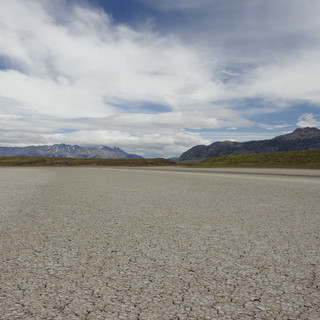Chile - The Carretera Austral
- Declan and Rachel

- Jan 16, 2019
- 4 min read
The Carretera Austral announced its start with a road sign in Puerto Montt, a port city in Chile's southern Lake district and a gateway to the Patagonian fjords. The road, built by the Chilean army in the late 70's under the orders of Pinochet, connects a number of remote communities and ends 1,240km south at Villa O'Higgins.
Off we set,taking the short ferry ride from Caleta La Arena to Puelche, followed by a rough gravel road to Hornopirén. There, we stayed two nights before boarding the ferry which transported us to Caleta Gonzalo and Park Pumalin. This was a 5 hour ride, which I'm sure has great views, but the sunny weather of the previous days had given way to low cloud and drizzle.
Arriving in Park Pumalin and despite the rain, we stopped to take a short walk to look at the Alerce trees (Patagonian Cypress), one of the oldest and largest trees in the world and thought to be a southern relative of the giant sequoia of North America. We then moved on to Lago Río Blanco, where we found free camp-sites with shelters by the the lake. Time for a bit of fishing. The third trout was unlucky - lake to frying pan 10 metres.
The next morning we headed towards Chaíten hoping to hike up to the volcano, but the cloud was low and it was still raining, so we continued to Chaitén town. After a stop in town, it was Sunday and everywhere was closed, the weather started to clear up and when we returned past the volcano again, we saw the smoking peak. So, a quick bite to eat and we set off on the hike up. It can only be described as a 1.5 hour Step Class up and a grind on the knees on the descent. It was, however, worth the effort and we saw up close the steam/smoke coming from the side of the volcano, which last erupted in 2008, adding 200 metres to its height.
We then spent the night at another free camp-site and were lucky enough to see a tiny Pudú deer.
The following day our designated hike was the Ranita Darwin trail in sector Amarillo of Pumalin Park. The whole walk through the forest was something special. ......ferns, lichen, moss, algae and gunnera - my kind of heaven.
Outside a coffee stop in El Amarillo, I spotted a bike with a green Brooks saddle (very British). Once indoors, we met Danny, the cyclist, a doctor from Scotland. He had flown in with his bike and, with no pre-trip training, was cycling the Austral. He was totally laid back and tackling the terrain as it came.
From there we continued on to Queulat National Park and headed off on a hike to view the hanging Ventisquero Colgante Glacier and it's waterfalls. A fantastic walk, but a bit tiring on already weary legs. The views of the glacier made the yomp worthwhile.
As we continued south to Coyhaique, the countryside became more colourful, with valleys covered by lupins, rivers flowing into lakes and glaciers and mountains all around. A little fishing on Lago Elizalde, through Parque Nacional Cerro Castillo (no walking here) and down to Puerto Sanchez on the northern shore of Lago General Carrera. We joined Okan, Donna and Indigo for a boat trip to the marble caves on the lake. Interesting, but cold and choppy.
We back-tracked along the lake and rejoined the austral, passing Puerto Río Tranquilo and continuing on to Puerto Bertrand where we camped on the banks of Lago Bertrand, feeding into the Río Baker. Rachel and Donna decided on a girls' white-water rafting trip, whilst myself and Okan opted for a sedate bit of fishing. When I saw the ladies being briefed, I changed my mind and grabbed the camera. I drove to a point to catch them at the first rapids. That was successful, so I raced on to be waiting at the main rapids. On arrival, I was just clambering down a steep bank when I spotted the safety boat. Then, through a small gap in the trees, I see Donna bobbing through the rapids, shortly followed by the raft bearing only Rachel and their guide. Driving further down-stream, I found the the ladies by the bank shouting and howling with laughter - priceless.
Our final destination on the Carretera Austral was Cochrane. We were hoping to find some fishing spots. Unlucky for me and Okan, our attempts resulted in failure - just as well we weren't relying on our skills for food.
We decided to cross back into Argentina at Paso Robales, the most southerly border with vehicular access. This meant driving through Parque Patagonia. This park and four others were created by Kris & Douglas Tompkins. In 2018, these private parks were handed over to the Chilean government as National Parks. Our journey through the northern end of the Austral had been in the Pumalín Park, that was beautiful and we knew Patagonia would also deliver. Huge old ranches in the Chacabuco Valley were bought up and all fencing/barriers removed. A large contingent of volunteers helped remove non-native plants and trees, helping the native species to return and thrive. The wildlife has clearly returned to this natural wildlife corridor.
We only got to spend a short while in this place. Christmas was approaching and we needed an address for Santa's arrival. After a big breakfast and a morning of baking mince-pies (Donna's oven), we crossed the border into Argentina. We will be returning to the park in 2019 and plan to get a ferry from Puerto Natales north to Yungay and will finally arrive at the end of the road - Villa O'Higgins.



























































































































































































Comments